I have previously written about the scope of local and global variables in the SAS/IML language. You might wonder whether SAS/IML modules can also have local scope. The answer is no. All SAS/IML modules are known globally and can be called by any other modules. Some object-oriented programming languages support
English
Often, the topic of an article is motivated by a question from a user. A satisfactory resolution of the situation is usually a good indication of a topic that may be of interest to other users. On such question was posed to me by a user this weekend. He wanted to display fit
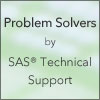
Some very common questions we receive into Technical Support are, “I need to be able to send the data for every hospital listed in my data set to a separate .csv file. How can I do that?” Or, “How can I run a PROC REPORT for each region listed in

Here is editor Len Tashman's preview of the new Spring 2014 issue of Foresight. In particular note the new article by Steve Morlidge of CatchBull, reporting on an analysis of eight B2B and B2C companies, which we'll discuss in a separate post. An organization’s collaboration in forecasting and planning has

When you run a program or task in SAS Enterprise Guide, the application wraps your job in an "ODS sandwich", the colloquial term we use for the ODS statements necessary to create output that can be viewed in your project. That's convenient for exploring and refining your program, but at

Recently, as I was driving in listening to National Public Radio (NPR), the topic of conversation was Edward Snowden and the National Security Agency (NSA), again. If you’ve been listening to any of this coverage, it seems the news media has a new catch word “metadata” that they are throwing

Q: How would you set the target for demand planners: all products at 0.7? All at practical limit (0.5)? A: In principle, forecasts are capable of being brought to the practical limit of an RAE of 0.5. Whether it is sensible to attempt to do this for all products irrespective
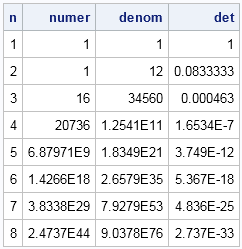
Last week I described the Hilbert matrix of size n, which is a famous square matrix in numerical linear algebra. It is famous partially because its inverse and its determinant have explicit formulas (that is, we know them exactly), but mainly because the matrix is ill-conditioned for moderate values of
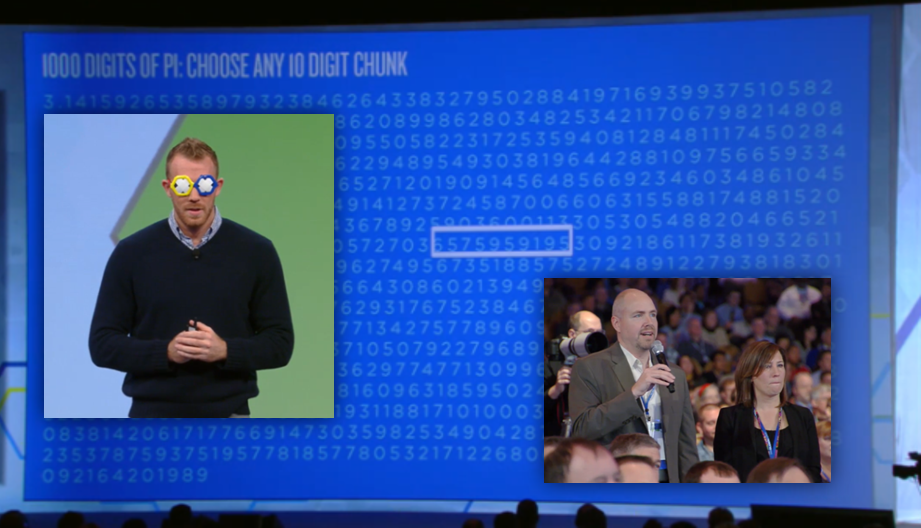
I'm in the grocery store with a "mental" list of 3 items to pick up: bread, eggs, and something unusual like cupcake liners. My phone rings. It's my wife (or sometimes a daughter) asking me to pick up one or two more things, maybe orange juice and bananas. Suddenly, the

Principle 2: Data architecture and IT infrastructure – A bank should design, build and maintain data architecture and IT infrastructure which fully supports its risk data aggregation capabilities and risk reporting practices not only in normal times but also during times of stress or crisis, while still meeting the other

The SAS Users Groups Leaders meet-up was scheduled for the last evening of SAS Global Forum 2014, sandwiched between the last of the Tuesday presentations and the Kick-Back Party later that evening. There were a few familiar faces from regional users groups but lots of new ones from local and

I enjoy blogging about new functionality in the SAS/IML language because I can go into more depth and provide more complicated examples than the SAS/IML documentation. Today's article is a summary of all of my posts about features that were added to SAS/IML 12.1, which shipped in August 2012 as
When you hear of a Scatter Plot or a Series Plot, you have a picture in your mind what we are talking about. But one of the plot statements available in GTL, and soon with SGPLOT, is the BLOCK plot. I am sure this leaves many users scratching their heads, wondering

In this tutorial video, you will learn to print a simple listing with Base SAS. You see how to write a PRINT procedure step to display a SAS data set. You also see how to use statements and options to subset observations and variables and enhance the report. Learn

Yesterday I blogged about the Hilbert matrix. The (i,j)th element of the Hilbert matrix has the value 1 / (i+j-1), which is the reciprocal of an integer. However, the printed Hilbert matrix did not look exactly like the formula because the elements print as finite-precision decimals. For example, the last

So far in this Ask the Statistician series, we heard statisticians at the Analytics 2013 conference discuss the benefits of statistical analysis, the types of statistical techniques they use to solve their business problems and how they share their statistical results with non-technical audiences that need to use this information. So, the next step

This is a question I get pretty often. It’s not an easy question to answer either. It depends on what your goal is. Do you want a milk that’s low in calories or do you want one that’s high in protein? Maybe taste is your only criteria. Luckily, if you

It was wonderful to see and talk with so many SAS Administrators at SAS Global Forum this year. If you’re like me, you may have finished the conference wondering why it wasn’t possible to be two places at once because there was so much terrific content that it was impossible
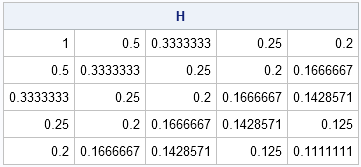
The Hilbert matrix is the most famous ill-conditioned matrix in numerical linear algebra. It is often used in matrix computations to illustrate problems that arise when you compute with ill-conditioned matrices. The Hilbert matrix is symmetric and positive definite, properties that are often associated with "nice" and "tame" matrices. The

Technology and software, much like SAS, makes everything simpler and more accessible. To fully appreciate what a company like SAS embodies and what it has to offer a student, I feel it is essential to attend SAS Global Forum, especially if analytics is something that drives you. Attending a conference

The volume is being turned up on the Control Tower approach to running a business; I have recently been introduced to logistics control towers, supply chain control towers and operations control towers just for starters. I’m sure there must be at least a half dozen more out there – pick
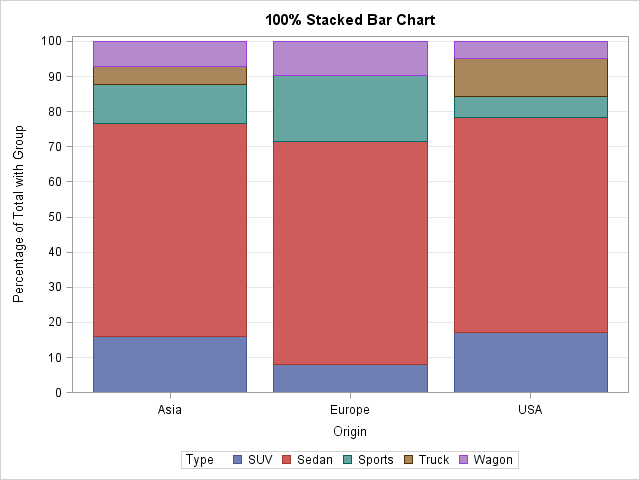
I enjoy reading the Graphically Speaking blog because it teaches me a lot about ODS statistical graphics, especially features of the SGPLOT procedure and the Graph Template Language (GTL). Yesterday Sanjay blogged about how to construct a stacked bar chart of percentages so that each bar represents 100%. His chart

With all the changes the Affordable Care Act brings, including new care and payment models, there is an increase in provider’s need for data. While some large health systems are able to learn much about a patient’s full course of treatment by integrating their systems, the majority of health care
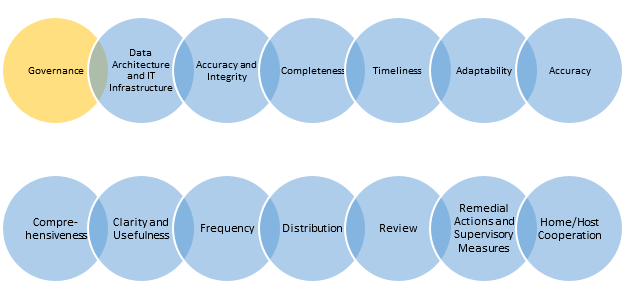
Principle 1: Governance – A bank’s risk data aggregation capabilities and risk reporting practices should be subject to strong governance arrangements consistent with other principles and guidance established by the Basel Committee. My colleagues and I have written a series of posts on the principles of BCBS 239. In this

Did you know that SAS/IML 12.1 provides built-in functions that compute the norm of a vector or matrix? A vector norm enables you to compute the length of a vector or the distance between two vectors in SAS. Matrix norms are used in numerical linear algebra to estimate the condition
The GCHART procedure has a popular option called G100 to display all the subgroups in % format such that all the subgroup values add up to 100% for each group. Each subgroup is labeled with its own % values. SGPLOT procedure does not such an option, but with a little bit of
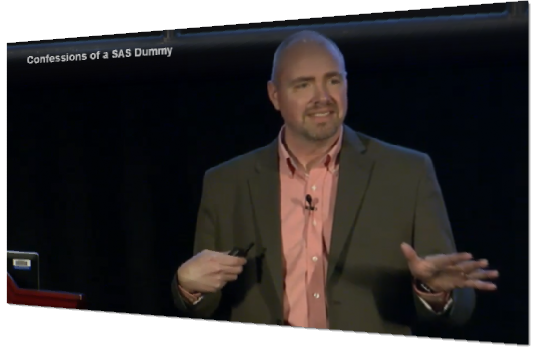
SAS Global Forum 2014 was a ton of fun, and extremely busy for yours truly. If you wonder how I spent my time at the conference, you need only to visit the on-demand video archive and see how many of the various sessions feature my shiny head. In most of

Are you wondering what to do next with your analytics program? The latest issue of sascom magazine provides a handy guide. Check it out to get help checking off must-do items like these: Establish an analytics center of excellence. Find out how SunTrust centralized all of the bank’s analytics teams –

You’d think life would be calmer after the high energy of SAS Global Forum. Not so here at SAS! Your feedback is THE most crucial element of the conference for SAS teams, and we’ll be spending the next few weeks digesting it, choosing the best method for implementing it and

This SAS tutorial video will show you how to create a new variable with Base SAS. During the step-by-step video, you will see exactly how to create and modify numeric and character variables using assignment statements in a DATA step. Watch and learn… To learn more about the steps in
















